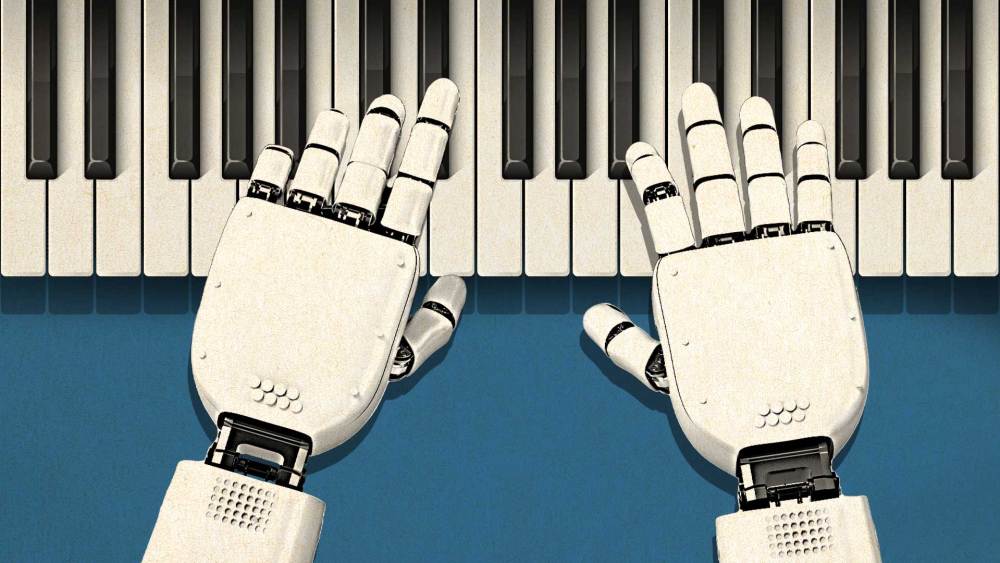Vicki Nauman is the founder and CEO of CrossBorderWorks, a music tech consulting and advisory firm she launched in 2014 with a portfolio of gaming companies, streaming platforms, apps, hardware, start-ups and industry consortiums. She is a a digital music veteran with previous senior roles at 7Digital, Sonos, KEXP, RealNetworks and others.
Generative AI is in the midst of a transition from renegade disruptive tech to a sustainable part of the digital music economy. It’s unclear just how bumpy this road will be or how big this sustained line of business will become, but it’s clear that like other previous disruptions to music, all roads lead to licensing.
The music business is built on an intellectual property foundation, much like many technology and gaming companies. However, the biggest difference between music and these other industries is that music can easily be integrated into third-party websites and apps and experiences, and that music brings a crowd and helps foster platform adoption. Once this collision occurs and someone else is benefitting from an artist’s music, there is an exchange of value and this is the lifeblood of how artists, labels, publishers, and collectives make money.
I know, I know: music licensing is not easy. It’s become a dirty word despite people like me doing it day in and day out. Music licensing has never been easy. Since the earliest days of music disruption back in 2000 with illegal file sharing, companies said copyright is outdated, that it’s impossible to deal with all the rights and laws, and that music should just flow freely in tech pipes. The same argument has been made over and over in the last 24 years with each new wave of tech entrepreneurs who didn’t understand what they were getting into when those songs were uploaded onto servers. But we figured out downloads, radio-style streaming, on-demand streaming, live streaming, digital fitness,TV/film, games, and we will also sort out generative AI.
When companies are at a fork in the road with music, there is often a binary choice – ask for permission or ask for forgiveness.
Permission, aka licensing, to many is a mysterious process. At a high level this always involves four elements: 1) creating viable tech that customers will use; 2) assessing which music rights are being implicated; 3) developing a business model that incorporates payment for music; and 4) presenting this package to music rights holders. I’m not going to lie: this alone often weeds out many companies, but it’s the only real path forward. It can take some time to get the licensing right, so you may need some short and long term goals, and you definitely need someone experienced to help.
Forgiveness is a different kind of ride. If you are small and don’t matter, you can often fly under the radar, but once you’ve built something that works, you are visible and exposed if you haven’t licensed music in your product. If you are already highly visible and you unlicensed music in your product, you are about to undergo the most expensive forgiveness you’ll ever ask for. Just to be clear, this is not the same kind of forgiveness as when you inadvertently miss an anniversary. This too is a path to licensing, but one in which you pay for all uses in the past and all uses in future at a premium, and you’ll be painted into a corner with nowhere to move. There are a few examples of companies that have survived this process including Musical.ly/Tik Tok and YouTube. However, there is an immense graveyard of long-gone companies who quickly found themselves far outspent in legal battles and whose potential was lost.
For generative AI, we are in the midst of a shift whereby many companies wishfully built initial models by training illegally on unlicensed music and content. Some are seeking legal solutions, some are shuttering, some still believe forgiveness is viable, and some are just in stasis. It’s easy for a Silocn Alley billionaire to suggest it’s a good idea to ask for forgiveness from on high, but for most it’s a death knell. The music industry is not fast and its tethered rights structures make modeling a legal approach very challenging, but anyone who doesn’t want to deal with someone else’s intellectual property should switch content types, because there really is no way around it. Every trick you can imagine has been tried.
For generative AI, it may be some time before major rightsholders are ready to enable companies to train and generate new songs out of a catalog of legacy hits and new crown jewels, but production libraries and smaller catalogs are open to this now. Maybe you don’t need every song ever created, but you will still need viable tech that will engage customers, a scope of what rights you need, and a business model and offer to present.
New solutions in generative AI that give rightsholders some level of control and visibility are emerging, such as rights management, generative AI detection, and attribution. These will become part of a legal ecosystem around generative AI. My advice for companies interested in innovating around generative AI music is to focus on your use case, your user experience and engagement, and to create a great application for generative AI music. No one is asking for more music in DSPs, so try to look elsewhere for this use case. Is generative AI’s killer app going to be a new social platform with fun music memes? Is it in gaming with competitions and leaderboards? Is it artist-fan collaborations? Is it industrial use with a new kind of rights-free background music? Is it AI artists and their AI music?
While artificial intelligence is a very big, broad new category, for generative AI music, your path will include licensing existing music and engaging customers to monetize it as a baseline. Generative AI companies – it’s your moment to step up and help build this new music economy!
Read the full article here


